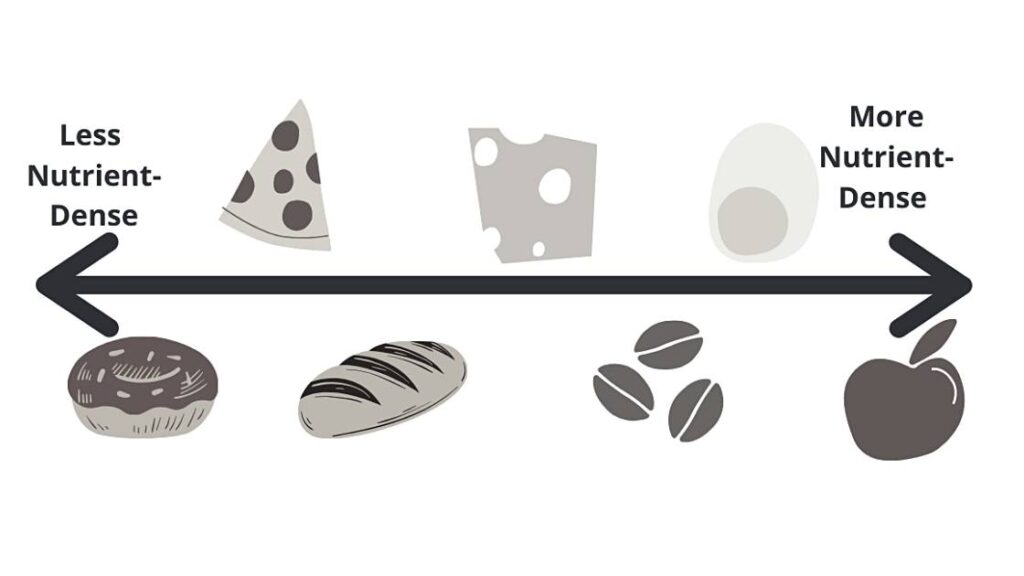“I’m watching my weight so I can’t eat pizza/burgers/nuts/cheese because they’re bad for me (aka high in calories).” Sound familiar? Too often do we think of “high calorie foods” as “bad” and low calorie foods as “good”. Our society has become obsessed with counting calories, therefore causing us to think that any food that is low in calories is inherently “good”, and any food that is high in calories is inherently “bad”. I’m here to tell you that’s not the case.
Instead of categorizing foods as good or bad based on their calories, I’m going to challenge you to look at foods on a continuum between “less nutrient-dense” and “more nutrient-dense.” What does this mean? The nutrient-density of a food can be determined by the amount of nutrients per the amount of food. Let’s look at an example of a handful of skittles and a handful of nuts.
A handful of skittles provides us with: 160 calories, 37 carbohydrates, 1.5 fat, and 30g sugar.
A handful of almonds provides us with: 170 calories, 6 carbs, 15 fat, 6 protein, 4g fiber, 6% of the recommended daily intake (RDI) of calcium, 6% of the RDI of iron, and 220mg of potassium.
If we’re only looking at calories, we’d think that a handful of skittles would be a better choice for a snack than a handful of nuts. But when we look at the nutrients our bodies would get from each, we see that almonds give us carbohydrates, fats, protein, fiber, calcium, iron, and potassium. Skittles only give us carbohydrates, a little bit of fat, and sugar. Almonds would be placed closer to the “more nutrient-dense” end of the continuum, and skittles would be placed closer to the “less nutrient-dense” end of the continuum, even though these foods are similar in calories.
Here’s another example: diet soda or a fruit smoothie.
A can of Diet Coke provides us with: 0 calories and 40mg sodium.
A Naked Green Smoothie provides us with: 140 calories, 33 carbohydrates, 2 protein, 15mg sodium, 400mg of potassium,2% of the RDI of calcium, 4% of the RDI of iron, 50% of the RDI of vitamin A, and 40% of the RDI of vitamin C.
A green smoothie has significantly more calories, but also has significantly more vitamins and other nutrients that our bodies need.
To perform optimally, our bodies need an abundance of nutrients that our “low-cal” “good” and “healthy” foods might not always give us. Instead of looking at foods as “good” or “bad”, look deeper into the nutrition that food gives you and place it on the spectrum. Make choices based on the “whole package” of what your food is providing you with rather than simply looking at how many calories it has.
Want to learn more about nutrient density, or want help figuring out what food choices to make? Let’s chat! Take a hold of your health and reach out to me today.

